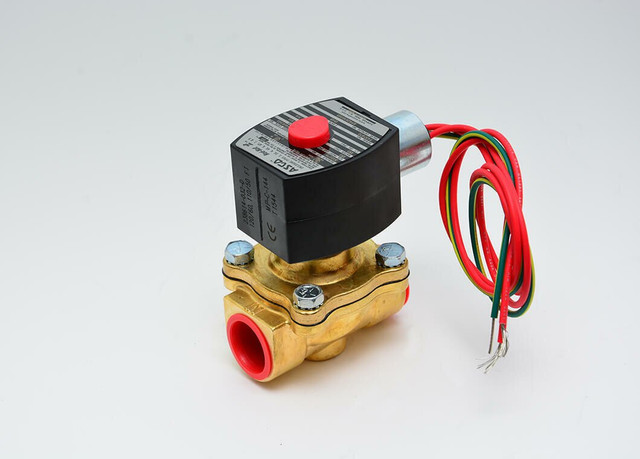
In fluid control systems, selecting the right type of valve can make all the difference. Whether you’re working on a large-scale industrial application or a smaller, domestic setup, understanding the capabilities of various valves is key to optimizing performance. Two popular choices for fluid control are actuated ball valves and solenoid valves. While they both serve similar functions, their design, operation, and suitability for specific applications vary. In this post, we’ll explore the differences between actuated ball valves and solenoid valves, and how to choose the best option for your system.
An actuated ball valve is a type of valve that uses a rotating ball with a hole (known as a port) to control fluid flow. The ball, when rotated by 90 degrees, either blocks or allows fluid passage through the valve. These valves are usually powered by electric, pneumatic, or hydraulic actuators, which enable automated operation.
Advantages : Actuated ball valves are incredibly durable and can handle high pressures and temperatures. They provide a reliable, tight seal, which prevents leaks and ensures the flow is fully blocked or allowed. Additionally, because of their simple design, actuated ball valves require minimal maintenance and have a long service life.
Applications : Actuated ball valves are commonly used in industries where precise flow control is needed, such as chemical processing, oil and gas, and water treatment. They are particularly beneficial in applications that require fast response times or where high-pressure and high-temperature conditions are present.
A solenoid valve operates using an electromagnetic coil, which is activated by an electric current. When the coil is energized, it creates a magnetic field that moves a plunger within the valve, opening or closing the valve. Solenoid valves can be designed for normally open (NO) or normally closed (NC) positions, depending on the application needs.
Applications : Solenoid valves are widely used in applications that require quick on/off control, such as in refrigeration systems, air compressors, and irrigation systems. They are also commonly found in household appliances like dishwashers and washing machines due to their fast response times and ease of integration with electronic controls.
Both actuated ball valves and solenoid valves are useful for fluid control, but their suitability depends on the specific requirements of the system.
Speed of Operation : Solenoid valves excel in systems that require rapid opening and closing, often in milliseconds. Actuated ball valves, on the other hand, take slightly longer to operate but provide a secure shutoff that is well-suited for high-pressure applications.
Flow Control : Actuated ball valves offer precise control over flow rates, as they can be partially opened or closed to regulate flow. Solenoid valves, however, are typically on/off devices, which limits their ability to manage varying flow rates. If fine control is needed, an actuated ball valve is usually the better option.
Power Requirements : Solenoid valves are powered by electric current, making them easy to integrate into automated systems. Actuated ball valves, depending on their actuator type (electric, pneumatic, or hydraulic), may require a more complex setup but offer flexibility for power options. In systems where electrical access is limited, pneumatic or hydraulic actuators may be advantageous.
Durability and Maintenance : Ball valves are known for their longevity and low maintenance requirements. Solenoid valves, while also reliable, have more moving parts and are susceptible to issues if exposed to dirty or corrosive fluids. For applications involving harsh conditions, actuated ball valves generally offer better durability.
Conclusion
Both actuated ball valves and solenoid valves are valuable tools in fluid control, each with its own strengths and applications. Solenoid valves are excellent for rapid on/off control in low-pressure systems, while actuated ball valves are durable and suitable for high-pressure, high-temperature applications requiring precise control. Understanding your system’s requirements will help you make the right choice, ensuring efficient operation, reduced maintenance, and optimal fluid control.
